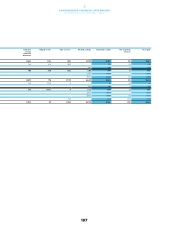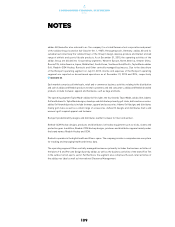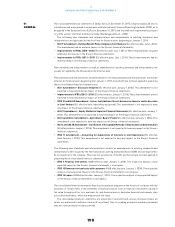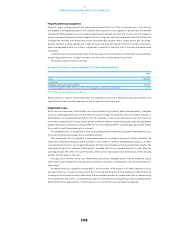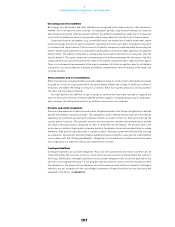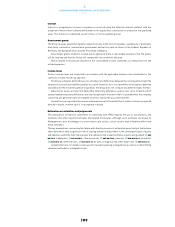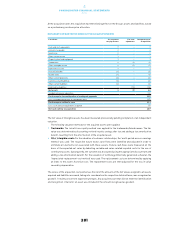Reebok 2015 Annual Report Download - page 201
Download and view the complete annual report
Please find page 201 of the 2015 Reebok annual report below. You can navigate through the pages in the report by either clicking on the pages listed below, or by using the keyword search tool below to find specific information within the annual report.
CONSOLIDATED FINANCIAL STATEMENTS
Notes
197
4
Borrowings and other liabilities
Borrowings (e.g. Eurobonds) and other liabilities are recognised at fair value using the ‘effective interest
method’, net of transaction costs incurred. In subsequent periods, long-term borrowings are stated at
amortised cost using the ‘effective interest method’. Any difference between proceeds (net of transaction
costs) and the redemption value is recognised in the income statement over the term of the borrowing.
Compound financial instruments (e.g. convertible bonds) are divided into a liability component shown
under borrowings and into an equity component resulting from conversion rights. The equity component
is included in the capital reserve. The fair value of the liability component is determined by discounting the
interest and principal payments of a comparable liability without conversion rights, applying risk-adjusted
interest rates. The liability component is subsequently measured at amortised cost using the ‘effective
interest method’. The equity component is determined as the difference between the fair value of the total
compound financial instrument and the fair value of the liability component and is reported within equity.
There is no subsequent measurement of the equity component. At initial recognition, directly attributable
transaction costs are assigned to the equity and liability component pro rata on the basis of the respective
carrying amounts.
Other provisions and accrued liabilities
Other provisions are recognised where a present obligation (legal or constructive) to third parties has been
incurred as a result of a past event which can be estimated reliably and is likely to lead to an outflow of
resources, and where the timing or amount is uncertain. Other non-current provisions are discounted if
the effect of discounting is material.
Accrued liabilities are liabilities to pay for goods or services that have been received or supplied but
have not been paid, invoiced or formally agreed with the supplier, including amounts due to employees.
Here, however, the timing and amount of an outflow of resources is not uncertain.
Pensions and similar obligations
Provisions and expenses for pensions and similar obligations relate to the Group’s obligations for defined
benefit and defined contribution plans. The obligations under defined benefit plans are determined
separately for each plan by valuing the employee benefits accrued in return for their service during the
current and prior periods. These benefit accruals are discounted to calculate their present value, and the
fair value of any plan assets is deducted in order to determine the net liability. The discount rate is set
on the basis of yields of high-quality corporate bonds at the balance sheet date provided there is a deep
market for high-quality corporate bonds in a given currency. Otherwise, government bond yields are used
as a reference. Calculations are performed by qualified actuaries using the ‘projected unit credit method’
in accordance with IAS 19 ‘Employee Benefits’. Obligations for contributions to defined contribution plans
are recognised as an expense in the income statement as incurred.
Contingent liabilities
Contingent liabilities are possible obligations that arise from past events and whose existence will be
confirmed only by the occurrence of one or more uncertain future events not wholly within the control of
the Group. Additionally, contingent liabilities may be present obligations that arise from past events but
which are not recognised because it is not probable that an outflow of resources will be required to settle
the obligation or the amount of the obligation cannot be measured with sufficient reliability. Contingent
liabilities are not recognised in the consolidated statement of financial position but are disclosed and
explained in the Notes SEE NOTE 38.


